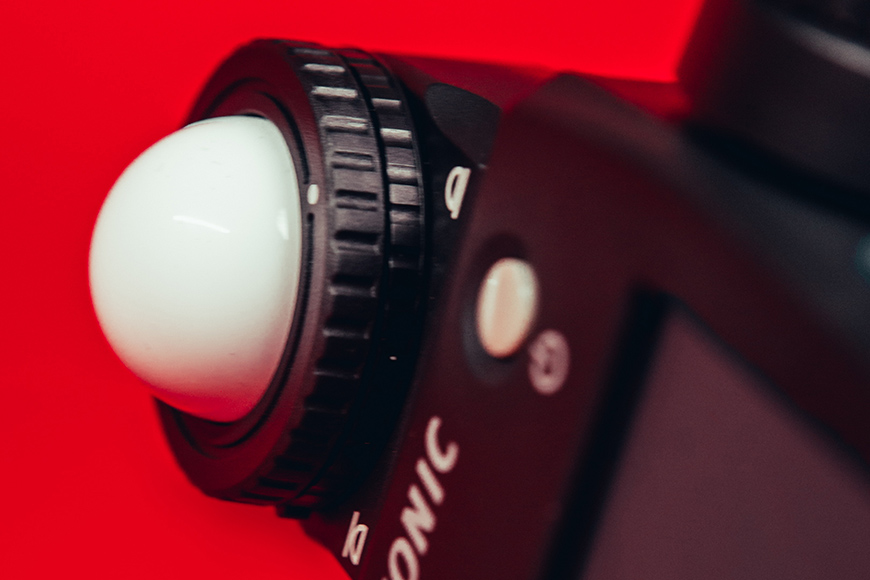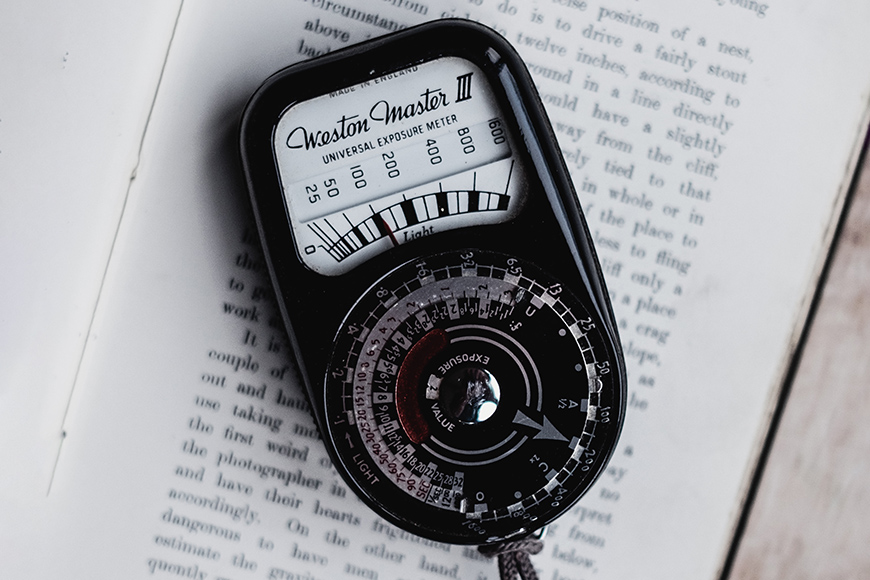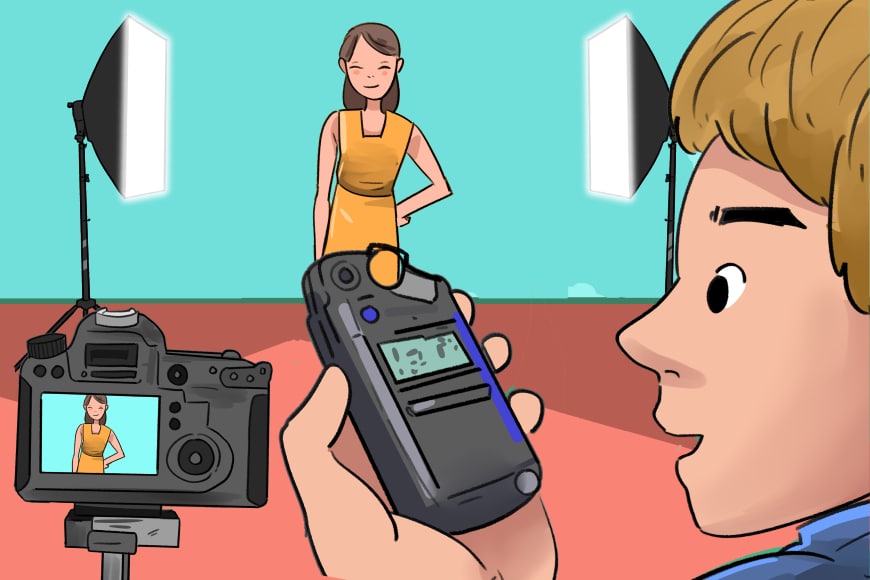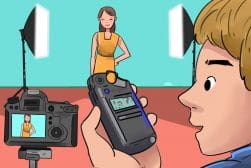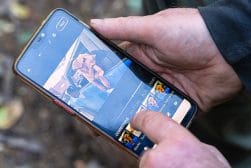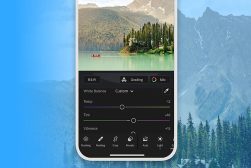Best Light Meter App in 2023 for Film Photography & Video
Did you know you can use your phone to meter the ambient light in a scene? Choose from one of these light meter apps to get the right exposure every time.
Mobile Apps | Software | By Jeff Collier
This guide to the best light meter apps will help you get the correct exposure for every photo.
Whether you use Android or iPhone, there’s a free light meter app for photography to measure ambient light.
I use the Lux light meter app to check exposure when shooting with my medium-format film camera.
However, with several other great light meter apps available here in 2023, I was keen to test out a few more.
Whether you already use a professional light meter and want a backup app or simply want to experiment, my recommendations below should save you some time.
Table of Contents
What is the Best Light Meter App in 2023?
myLightMeter Pro (Best Light Meter App for iOS)
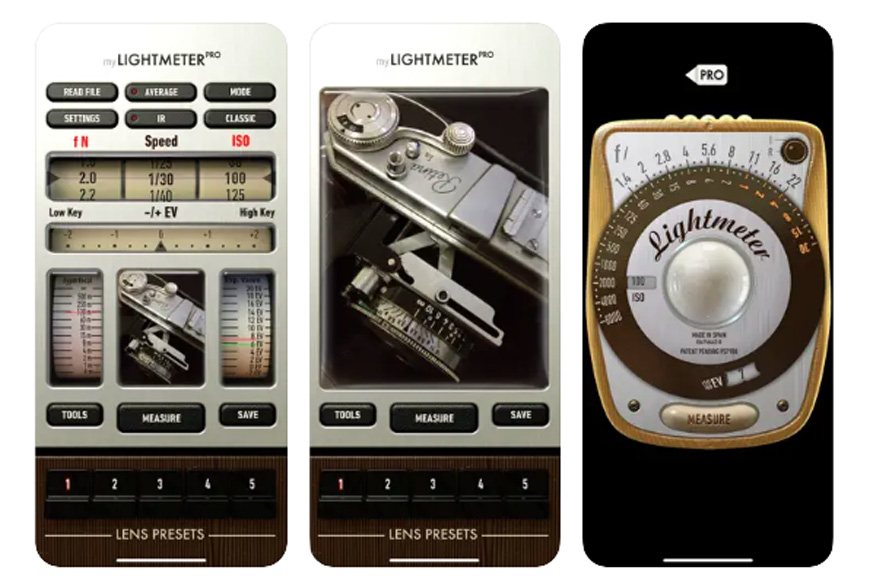
- Pros here
- Pros here
- Pros here
- Pros here
- Cons here
- Cons here
A top pick among both film and digital photographers on iOS, myLightMeter Pro brings to the table robust features that are second to none.
Vouched for by the photography community, this app delivers excellent accuracy, ensuring you get the perfect exposure every single time.
Its user-friendly interface lets you switch between lenses effortlessly, thanks to a memory feature for up to five lenses.
The standout attribute, however, is the capability to meter shutter speeds of up to four minutes, a feature you rarely find in similar apps.
Whether you prefer incident or reflected light metering modes, myLightMeter Pro has you covered, providing the flexibility you need for different shooting conditions.
This comprehensive light meter app is available on APK for Android.
Lux Light Meter Pro (Best Light Meter App for Android)
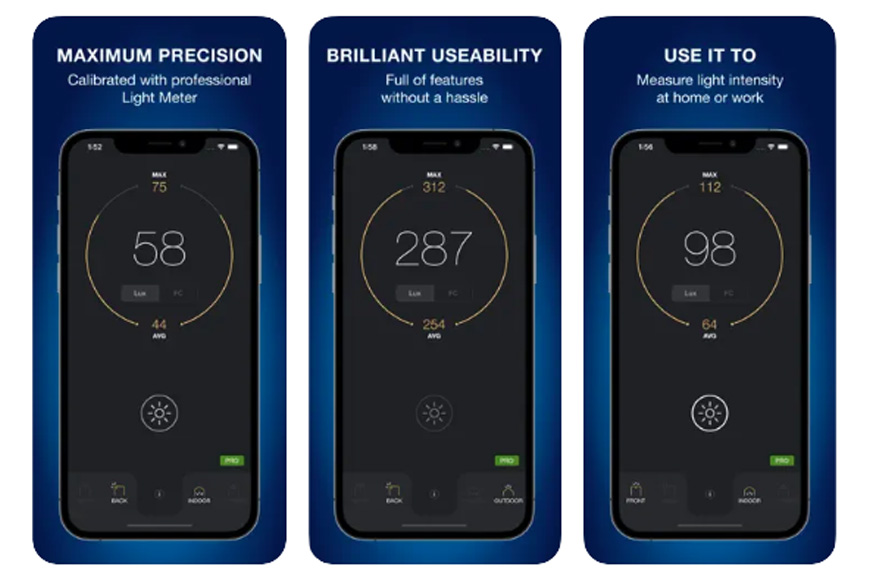
- Pros here
- Pros here
- Pros here
- Pros here
- Cons here
- Cons here
My pick as the leading light meter app for Android, Lux Light Meter Pro doesn’t disappoint when it comes to accurate and fast light measurement.
Trusted by a wide range of photographers, this app guarantees the correct exposure regardless of whether you’re shooting on film or digital.
With a sleek, user-friendly design, Lux Light Meter Pro is very accessible, allowing photographers to measure the light intensity within seconds.
Its major highlights include offering settings for ISO, shutter speed, and aperture, allowing users to achieve a balanced exposure under varying light conditions.
The Pro version of Lux Light Meter comes ad-free and features advanced settings that cater to the needs of both novices and professionals.
Light Me (Best Free Light Meter App for iOS)
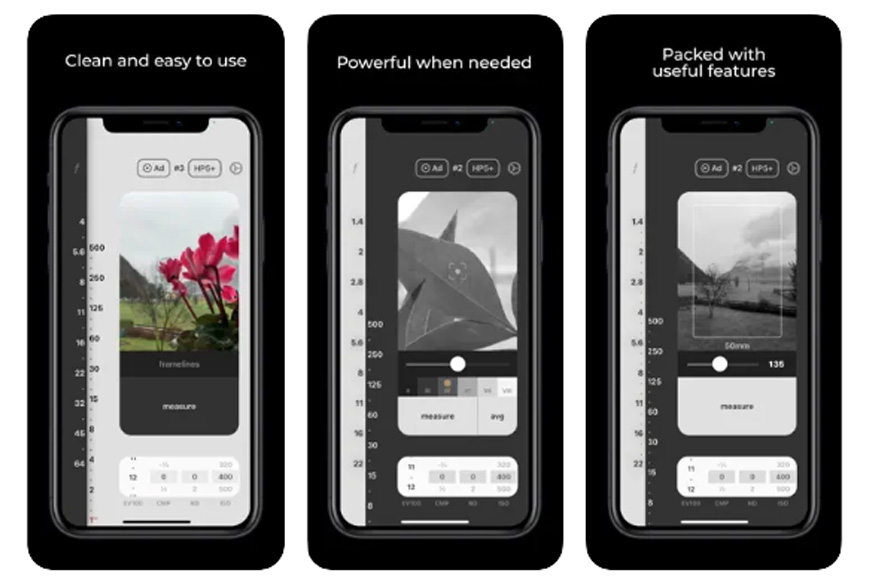
- Pros here
- Pros here
- Pros here
- Pros here
- Cons here
- Cons here
Light Me has proven itself to be an indispensable free light meter app for iOS users.
Not only does it provide impressively accurate readings, but it also boasts a unique feature: a view that displays all viable exposure possibilities at once along the left side of the screen.
This innovative feature, lauded by users, considerably enhances the ease of finding the perfect exposure settings. The clean, intuitive UI further makes the app a breeze to use.
With Light Me, ad interruptions are a thing of the past; however, users can choose to opt-in to support the developer.
But what truly sets Light Me apart is the extensive developer support. An active presence on platforms like Reddit makes the developer engagement feel akin to an open-source project, with updates often reflecting user feedback.
Indeed, Light Me is not just a tool, but a collective endeavor for the benefit of the photography community.
Light Meter – Lite (Best Free Light Meter App for Android)
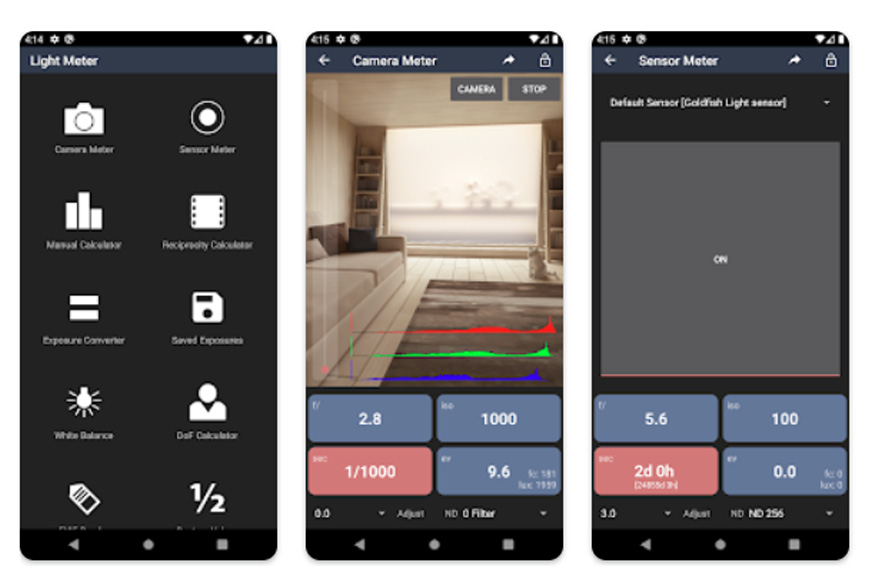
- Pros here
- Pros here
- Pros here
- Pros here
- Cons here
- Cons here
Claiming the title for the best free light meter app for Android, Light Meter – Lite packs an impressive mix of features and simplicity.
This app stands out for its reliability across various conditions, from low light to tricky backlit subjects, making it an all-weather ally for photographers.
One notable feature is its ability to adapt exposure to favor either highlights or shadows, giving you a significant amount of creative control.
The developer ensures frequent updates, keeping the app fresh and bug-free. Customization is at the heart of Light Meter – Lite, with options to set custom ISOs, f-stops, and shutter speeds.
Despite being free and fully-featured, the app doesn’t bombard you with annoying ads, offering a clean, uninterrupted experience.
If you’re an Android user, Light Meter – Lite is certainly a must-have tool in your film photography kit.
Light Meter Ultra
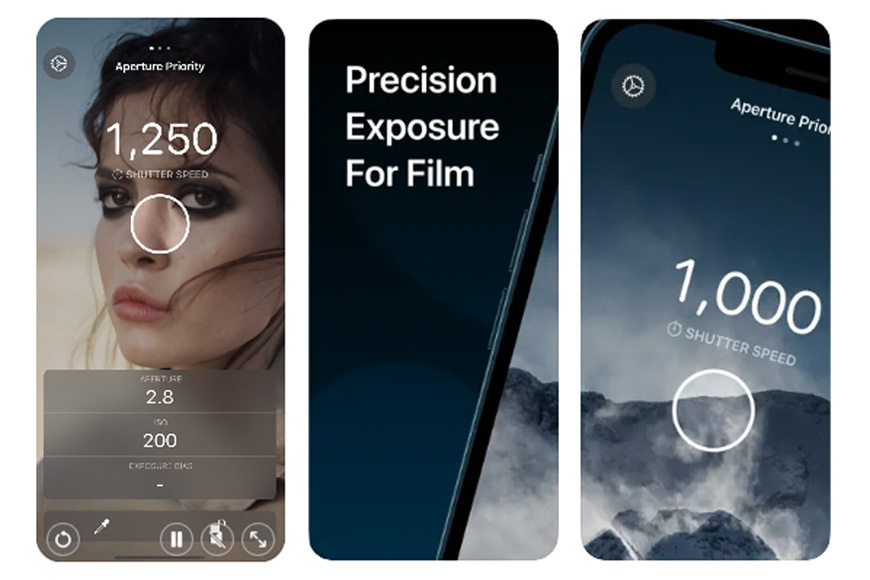
- Pros here
- Pros here
- Pros here
- Pros here
- Cons here
- Cons here
Light Meter Ultra, designed for iPhone, is fast, precise, and incredibly user-friendly.
No additional hardware is required, and the days of wrestling with the arcane Sunny 16 rule are over.
By merely pointing your device at the scene, Light Meter Ultra provides the exact readings you need for your camera.
This precision guarantees the perfect settings for capturing the widest dynamic range.
The app’s free plan offers the precision Aperture Priority metering mode, limited settings, and single-use shooting profiles.
Upgrading to a PRO plan unlocks a suite of professional metering modes, quick-select reusable shooting profiles, and advanced features like reciprocity failure correction.
Key features include Aperture and Shutter Priority metering modes, exposure lock, exposure compensation, customizable ISO, shutter speed and aperture ranges, detachable lens profiles, film/emulsion profiles, bulb-mode, and reciprocity failure correction.
LightMeter
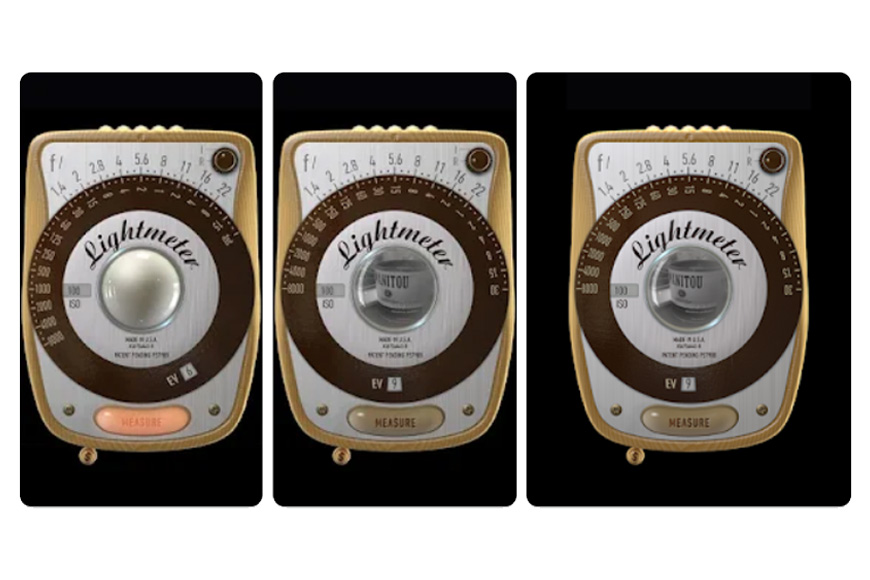
- Pros here
- Pros here
- Pros here
- Pros here
- Cons here
- Cons here
LightMeter is a no-nonsense app by David Quiles that has carved out a strong reputation among photographers for its precision and simplicity.
No extra equipment is required; this app works by using the light sensor in your smartphone to provide accurate exposure readings.
Designed by a photographer for photographers, LightMeter is focused on RELIABILITY and PRECISION for digital and analog photography.
Whether you’re working with film or digital, LightMeter adapts to your needs – it works on any iPad or iPhone including 6/6+.
With this tool, you can easily measure reflected light to set up your camera for the perfect shot.
Its clean and straightforward interface makes it a breeze to understand and use, even for beginners.
LightMeter offers a real-time exposure meter which, coupled with its incident-light reading capabilities, guarantees you the right exposure every time.
It’s the ideal companion for any photographer aiming for optimal exposure in their work. In short, LightMeter brings the ease and accessibility of digital tools to the tactile world of film photography.
What is a Light Meter and Do I Need One?
A light meter is a device that measures the intensity of light in a scene.
It helps determine the proper exposure for a photograph, ensuring that the image isn’t overexposed (too bright) or underexposed (too dark).
The light meter works by providing information on the shutter speed and aperture (f-stop) needed for the optimum exposure given a certain film speed (ISO).
In traditional film photography, light meters are an essential tool as film cameras typically lack the advanced metering systems found in digital cameras.
A handheld light meter can offer greater precision, especially for complex lighting situations.
It can also be used to measure incident light (light falling on the subject) rather than reflected light (light bouncing off the subject), which can provide a more accurate exposure reading.
In the digital photography era, the need for a separate light meter may not be as apparent.
Most digital cameras come equipped with built-in metering systems that can handle a variety of lighting situations.
However, using a separate light meter can still have advantages in certain circumstances.
For example, professional photographers, or those dealing with complicated lighting scenarios, may benefit from the added precision of a standalone light meter.
Now, in terms of light meter apps, these can be a practical and accessible solution for both film and digital photographers.
They use your smartphone’s sensor to measure light and provide exposure settings, making them a convenient and cost-effective alternative to a traditional light meter.
So, do you need a light meter or a light meter app?
If you’re shooting with a film camera, dealing with complex lighting, or you’re a photography enthusiast who values precision and control, then the answer is likely yes.
For casual shooters using digital cameras, the built-in metering system will usually suffice for most situations.
How does a Light Meter app for a phone actually work?
Light meter apps for phones use the device’s built-in camera and sensors to measure the ambient light in a scene.
These apps analyze the intensity of light and provide you with exposure readings, allowing you to achieve accurate exposure settings for your photos.
By accessing the camera’s data, such as ISO, shutter speed, and aperture, light meter apps calculate the optimal settings based on the available light.
Some of the best light meter apps may offer additional features like spot metering, histograms, and customizable settings to cater to various shooting scenarios.
Can I trust the readings from a light meter app to be accurate?
Light meter apps can provide accurate readings, but their reliability may vary depending on factors such as the quality of the app, the device’s camera and sensors, and calibration settings.
In general, modern smartphones have advanced cameras and sensors that can deliver reasonably accurate readings.
However, it’s important to keep in mind that light meter apps may not be as precise as dedicated physical light meters used by professional photographers.
Some light meter apps allow you to calibrate them to match a known light source or a physical light meter. Calibration can improve the accuracy of the app’s readings.
Also, if possible you should cross-reference the app’s readings with another camera’s built-in light meter or with a physical light meter.
What about the Lumu Light Meter?
Even the best light meter app is only as good as the person holding it – it’s really important that you understand metering and exposure before you try and use one, or the results won’t be accurate.
The device’s light sensor quality is also important, but this isn’t something you can control on a smartphone or tablet.
However, with the Lumu Light Meter (Lumu Power 2), there’s a diffuser you plug into your iPhone to take the reading.
The Lumu Light Meter incorporates two sensors – a true color sensor, based on the color standard CIE 1931/DIN 5033, and a fast silicon photodiode capturing light at 750 000 measurements/second.
Each Lumu Light Meter is calibrated before leaving the manufacturing line and comes with a calibration certificate.
We reviewed the Lumu Power 2 here.
7 Tips to Get the Best Results from a Light Meter App
- Understand metering modes: Familiarize yourself with the different metering modes offered by the app, such as spot metering, incident light metering, or reflective metering. Learn when and how to use each mode depending on the lighting conditions and subject.
- Take multiple readings: For critical shots, consider taking multiple readings from different areas of the scene to ensure a balanced exposure. This is particularly useful in high-contrast situations where different parts of the scene may have varying light levels.
- Adjust exposure settings: Use the readings provided by the app to adjust your camera’s exposure settings, such as ISO, shutter speed, and aperture. Experiment with different combinations to achieve the desired exposure and creative effect.
- Consider exposure compensation: Depending on the scene and lighting conditions, you may need to apply exposure compensation to account for any biases or to achieve the desired brightness or darkness in the image. Use the app’s readings as a guide to make necessary adjustments.
- Verify accuracy: Periodically compare the app’s readings with your camera’s built-in light meter or a physical light meter to ensure the app’s accuracy. This verification step can help you gain confidence in the app’s measurements.
- Practice in different lighting conditions: Experiment with the app in various lighting conditions, including natural light, artificial light, and challenging situations like backlighting or low light. This practice will help you become more proficient in using the app across different scenarios.
- Trust your instincts: While light meter apps are valuable tools, trust your creative instincts and experience as a photographer. Use the app’s readings as a guide but make adjustments based on your artistic vision and desired outcome.
Frequently Asked Questions about Light Meter Apps
Do light meter apps work with all types of lighting conditions, including low light or extreme brightness?
Light meter apps are designed to work in a wide range of lighting conditions, including low light and extreme brightness. However, the accuracy might vary depending on the specific app and the capabilities of your smartphone’s sensor.
Can I use a light meter app to measure the color temperature of light sources?
While light meter apps excel in measuring light intensity, they generally do not measure the color temperature of light sources. For this, you would need a color meter or a specialized app designed to measure color temperature.
Are there any differences in accuracy or functionality between free and paid light meter apps?
The accuracy and functionality of light meter apps can vary. Free apps typically offer basic features and may be less accurate compared to paid ones, which often provide more comprehensive features and better precision. If you want to get as close as possible to a professional light meter, you may need to upgrade to a paid light meter app.
Are light meter apps only useful for photography, or can they be used for videography as well?
While often associated with photography, light meter apps can also be beneficial for videography. They can assist in determining the right exposure for a video shot, helping to ensure consistent lighting conditions across different shots and scenes.





